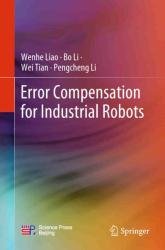 Название
Название: Machine Tools: An Industry 4.0 Perspective
Автор: Wasim Ahmed Khan, Khalid Rahman, Ghulam Hussain
Издательство: CRC Press
Серия: Computers in Engineering Design and Manufacturing
Год: 2023
Страниц: 227
Язык: английский
Формат: pdf (true)
Размер: 10.4 MB
This book introduces the applications of Industry 4.0 in machine tools through an overview of the latest available digital technologies. It focuses on digital twining, communication between industrial controls, motion, and input/output devices, along with sustainability in SMEs. Machine Tools: An Industry 4.0 Perspective focuses on the digital twining of machine tools, which improves the life of the machines and provides a method of operating a factory during times of complete lockdown resulting from various conditions. It presents an overview of the communication between industrial controls, motion, and input/output devices through standardized digital interfaces such as SERCOS and USB. The book goes on to discuss industrial cybersecurity systems applicable to discrete manufacturing, which includes cyberattacks and human errors, and address the security aspects related to software, hardware, and data. The book also explores the application of big data for different stages of production and illustrates the uses such as predictive maintenance, product quality, product life cycle management (PLM), and more.
 Название: Справочник по инженерно-строительному черчению
Название: Справочник по инженерно-строительному черчению







 Название: Error Compensation for Industrial Robots
Название: Error Compensation for Industrial Robots Название: Machine Tools: An Industry 4.0 Perspective
Название: Machine Tools: An Industry 4.0 Perspective